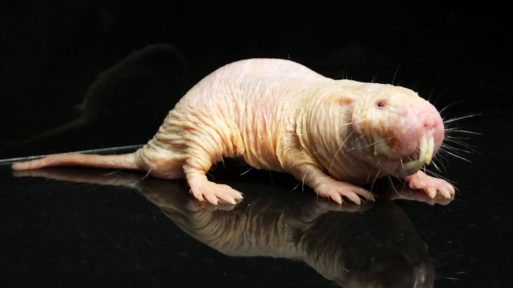
Naked mole rats are one of the animal world’s outliers when it comes to lifespan vs. body size | Credit: Wired
To study human aging beyond looking in a mirror every day with increasing horror, scientists have routinely started small. They have examined fruit flies and lab mice, which are plentiful, reproduce quickly and are easily thrust into lab settings. Another presumed benefit is their short life spans. This has allowed researchers to observe and collect the necessary data and quickly turn it around into actionable, published research. However, some in the field of aging research are setting their sights on the more wizened members of the animal world that have mastered growing old for centuries.
A recent article in Knowable Magazine details the push for understanding human aging through the earth’s most durable inhabitants.
The clearest pattern scientists have locked in on is that bigger animals tend to live longer. Some of the most well-documented multi-centenarians come from massive species. The current living title-holder for the world’s oldest creature is a Seychelles tortoise, named Jonathan, which is claimed to be 188. Other notable entrants have been octogenarian condors and ancient Greenland sharks.
But bigger isn’t always better. While body size reduces the number of existential threats you encounter on a daily basis, it isn’t a be-all-end-all for living longer. Naked mole rats can outlive their rodent cousins to the ripe old age of 35. Smaller dog breeds like terriers can have double the lifespan of their larger canine counterparts, such as Irish Wolfhounds. Scientists are finding the key to their longevity in a process called DNA methylation.
A Genetic Clock
DNA methylation acts as a “genetic clock” for researchers in estimating either the maximum lifespan of a living animal or the age of a now-extinct animal. Cells tag certain sites responsible for turning genes on and off with methyl groups also known as epigenetic marks. The clock gets less precise as animals age, and certain genes, such as the ones elephants use to prevent cancer, aren’t switched on.
The research examining animals’ methylation sites is still relatively new, but scientists have found that longer-living animals, such as bats, maintain their epigenetic clocks later in life, and their maintenance systems got stronger as they got older too.
Researchers also saw the animals most successful at staying alive demonstrated high activity in genes used in DNA repair and fighting oxidation, which causes cells to break down.

Dog owners are volunteering their pets to help in the search for answers to human aging and longevity.
Outliers like bats, mole rats and elephants are great, but some researchers are looking at a more abundant animal to unlock more clues around aging. The Dog Aging Project, founded by researchers at the University of Washington and Texas A&M University, utilizes our affinity for our furry best friends as an asset in research to provide a built-in research partner as owners.
“When I give a seminar on my fruit fly research, nobody comes up to me and says, ‘I love fruit flies.’ But people love dogs,” Daniel Promislow, co-director of the project, told Knowable.
The project expects to enroll 30,000 family dogs by 2022, sequence their genomes and make detailed measurements of gene activity to identify the differences in aging between breeds. Already, data from the project has helped scientists find how dogs’ cognitive skills change over time across breeds, and how both dogs and humans can contribute to healthy aging in each other.
While the mysteries of aging may seem out of reach now, studying animals who have gotten it right before humans could provide the answers to extend our own lives.

 What Mole Rats Can Tell Us About Human Aging
What Mole Rats Can Tell Us About Human Aging


 How Dare You Die Now!
How Dare You Die Now!

 “Help Me, Helen”
“Help Me, Helen”














